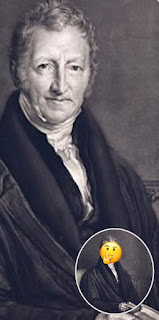Malthus Would've Found India Bizarre! (Especially the Green Revolution)
Would you believe that the world's population could increase in multiples of 5 and the food production only by 2's or 3's? Can you imagine a world where there are billions of people and only a few million tonnes to feed the population? Difficult right?
This is where the Malthusian Theory of Population comes into play.
It was originally published by Thomas Malthus in the year 1798, when he noticed that the world population was increasing in a given ratio, following a geometric progression while the food supply was only increasing in numbers, following an arithmetic progression. (See more on Study.com)| Image from Unsplash |
 |
| Main Image from Wikipedia |
This was indeed a life-threatening phenomenon observed by Malthus. Let us look at the Malthusian Theory from the Indian perspective. In India, there was a time when there was a shortage in food grain production. This was essentially a result of population growth, land-related policies, and much more. Could you guess the timeline we’re talking about? Yes, it is the pre-Green Revolution phase, around the 1950's. The primary reason for the occurrence of the Green Revolution can be attributed to severe foodgrain shortages due to several reasons, one of them being population growth.
The only difference between what we did to curb the issue was to procure HYV Seeds (High Yielding Varieties of Seeds), which took a shorter time to mature. Unlike the case of Thomas Malthus, we did not control our population through family planning or government policies or schemes.
The Indian way of looking at things is quite different from the rest of the world.
We found a solution to increase our food production instead of bringing down the level of population. The actual solution proposed by Malthus himself was to bring down the level of the population since it was not possible in the 1790s to increase foodgrain production in a short time period. This explains why the Malthusian Theory could have not been applicable in the peculiar case of the Indian Economy.

Great one!!
ReplyDeleteGreat work . A lot of valuable information and very interesting information . The inform has been presented in a very simple yet eye catching manner .
ReplyDeleteNice
ReplyDeleteGood research done
ReplyDeleteCool topic!
ReplyDeleteNice job 🙌
ReplyDeleteAmazing
ReplyDeleteSuch an interesting topic!
ReplyDeleteAmazing write-up!
ReplyDeleteGreat research and nicely put info!
ReplyDeleteVery Interesting
ReplyDelete